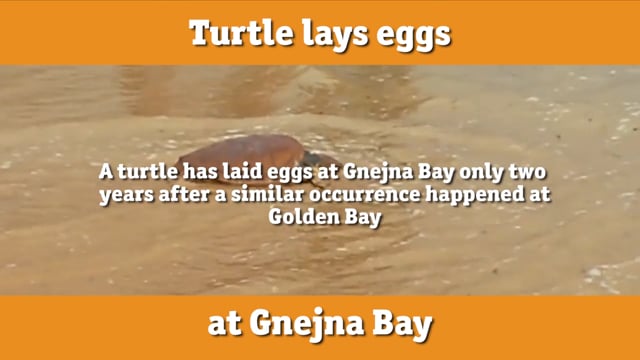[WATCH] Turtle nesting’s turbulent Malta history
Last week, a Loggerhead turtle laid eggs at Gnejna Bay, only the second time in the last six years this has happened. Why are these turtle eggs so important?


Turtle sightings around Malta are not that rare, with lots of turtles spotted in our waters in the summertime, Nature Trust CEO, Vincent Attard has told MaltaToday.
And while turtles can be spotted, the endangered animals’ eggs are harder to come by.
The last two recordings of Loggerhead eggs in Malta date back to some 100 and 60 years ago respectively. Attard said that in both cases people stole the eggs and killed the turtle. After that, no turtle eggs were seen in Malta until 2012, when a turtle nested close to the sea at Gnejna Bay. The eggs were exposed to high risks and waves, making nesting harder.
“As the nesting was late in summer, the nest was exposed to strong climate conditions such as storms,” Attard said. “The storm happened three days before they hatched. Unfortunately, water rose under the sand because of the clay, drowning the possible hatchlings just a few days before hatching.”
In 2016, another nesting was spotted in Golden sands. Attard said that this time, the nest was in a safe place and the bay conditions offered a much better environment for the hatchlings. “After 57 days they hatched, with a successful 71 turtles out of 85 eggs,” Attard said. “This a good result when one sees data from other nesting grounds around the Mediterranean.”
Now, a new nesting was spotted in Gnejna. “We were called at 10am and we went on site before people would be stepping around on the bay. Since it was raining that day, it made it difficult to locate the nest, but after some time we found it. As per our agreement with ERA we called them and the Police for the legal protection operation to start.”
Although the bay offers a big challenge for the eggs to hatch, Attard said they were ready to let nature take its course, while protecting the nest from predators and sea conditions.
“In the last few years we are seeing a new phenomenon of turtles visiting beaches where they never used to visit,” Attard said. “This is being seen in Malta and places like Naples and Jordan. It is partly due to light pollution and people at the beaches.”
Attard explained that scientists are still trying to understand this behaviour, however, reasons include the development on sandy beaches, pollution, and boats all driving turtles to move to new grounds in the Mediterranean. Another factor is climate change, as beaches in the south are getting warmer.
“As turtles are decreasing and are endangered, their return is encouraged,” Attard said. In some places like Libya and Greece, turtles are nesting in hundreds.
The current turtle eggs are expected to hatch in around 60 days, right in time for the St Marija feast. While hoping for calm weather conditions, volunteers are needed so the eggs aren’t harmed.
“Volunteers guard the nest to give the turtle eggs a better chance. Our volunteers keep away predators like rats, snakes, cats or dogs that may attack the eggs, or human activity like someone placing an umbrella or a ball falling in the area.”
“Our priority is to let nature work and increase the chances of survival of our new hatchlings,” Attard said.
On the first sign of hatching eggs, the volunteers will open all protection barriers and follow each hatchling coming out to ensure they go in the sea.
One cannot touch these as it would impact the success rate and if they go in the sea on their own, the chances of coming back when they become adults would be higher. Those that get lost are then guided by means of a red light towards the sea.
“One has to keep in mind that turtles have been on our planet for over 200 million years, well before man appeared,” Attard said.






.jpg)
















